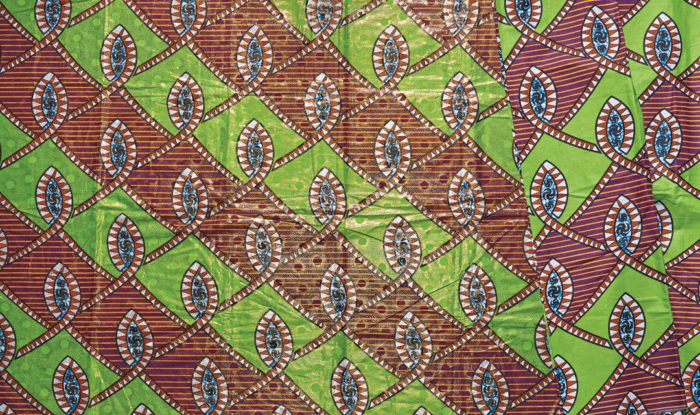Wax Prints
These colorful textiles have a diverse history and design potential
The vibrant, complex motifs of wax prints are only one aspect of what makes them desirable. These beautiful textiles are created with tightly woven, 45-inch-wide, 100 percent cotton cloth and dyed through a wax resist method. Because of the tight weave, they are stable and won’t shift while you sew. In addition, the dyeing process creates saturated color and crisp details on both sides of the textile, resulting in a fabric that has no “wrong side.” It most often comes in continuous 6-yard cuts, though it can be found in 2-, 4-, and 12-yard cuts as well. It retains a wax coating if pretreated without heat, giving it a stiff hand.
Although frequently referred to as African wax print, this textile originally hails from the Netherlands. In 1846, several Dutch entrepreneurs, including Pieter Fentener van Vlissingen, were looking to break into the lucrative Indonesian batik market with a new, automated manufacturing process, which used a modified block printing machine to roll wax and ink onto textiles.
Traditionally, batik is created using hand-applied wax, which is either painted on or applied with a pen-like device. The process can take up to a year, depending on the complexity of the design. Van Vlissingen’s goal was to speed up batik production with his machine-made alternative, thereby making it cheaper and more profitable. However, his printing process produced small flaws in the print, which his intended market found unappealing.
Trade routes eventually took the fabric to Africa by way of Ghana, and the striking fabric found its audience, where the inherent “flaws” were considered a sign of authenticity. The fabric is deeply tied to its African audience, with many prints produced according to the desires of the consumer. Inspired by the broad range of motifs and color, consumers name and invent backstories for the…
Start your 14-day FREE trial to access this story.
Start your FREE trial today and get instant access to this article plus access to all Threads Insider content.
Start Your Free TrialAlready an Insider? Log in


































Log in or become a member to post a comment.
Sign up Log in